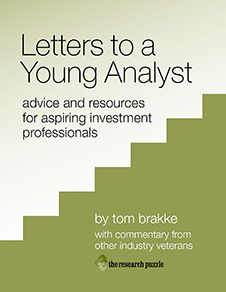
- Monday, July 25th, 2011
- fixing a hole
-
During this year of odd weather patterns, the Upper Midwest has gone from cooler than normal to extremely hot and muggy. The one constant has been water. It’s everywhere.
I have a relative whose house was swallowed by a river and others who have battled to get their crops in the ground, so the little story I am about to tell is nothing in comparison to what they’ve been through. But a few days ago I got a call that some of that water was getting into our house during a nasty rainstorm.
The facts of it all are unimportant, but as I went from the site of the problem to the work bench to the garage, looking for tools and trying to craft a homemade remedy for the problem (while getting completely soaked), I had a couple of things running continually through my head: The Beatles’ tune “Fixing a Hole” and the realization that I should have been better prepared for the situation. The tools I needed weren’t as organized as they should have been and some of the makeshift fixes that I could have created required me getting at materials that were difficult to access when time was of the essence. Furthermore, I realized that had I ignored some clues that would have tipped me off that trouble was ahead.
It got me thinking, too, that as investors we sometimes act in a similar fashion. When the weather is fine, we enjoy it, and when it gets ugly, we get frantic. When it comes to investment process, the best time to fix the hole is before the rain gets in, to be constantly on the lookout for things that can go wrong, repairing those that can be mended in advance and preparing for a wide range of possibilities going forward, by being trained and ready (and having the tools where you can find them).
Those at investment firms face a variety of challenges in addition to those of decision making process itself. The “back office” and “middle office” of an organization have gotten increasingly complex and a failure in an important function can be devastating. Plus, the marketing of a firm’s products may rely on a theme that is destined to fizzle out, yet the extent of the strategy in place is to ride it while it’s hot.
The underpinnings of a firm’s philosophy may appear rock solid, but be anything but. An excerpt in the Wilson Quarterly by Tony Rothman, a lecturer in physics at Princeton, provides an apt analogy. He said that the conceptual beauty and explanatory power of physics are compelling, but that over time “the hairline cracks in the edifice become more apparent, as do the dirt swept under the rug, the fudges, and the wholesale swindles . . ..” For the most part, “the subject is presented as one of completeness, while the holes — let us say abysses — are planked over in order to camouflage the danger.” So too the tenets of an investment strategy, especially when a big ticket is on the line.
Sometimes the weak spots that need to be fixed at a firm involve replacing key employees. Too often concerns about the poisonous effects of a person’s behavior are papered over because of his or her investment acumen or marketing power — until it’s too late. Typically, when everything finally comes to a head, the hole that needs to be fixed is a sizable one indeed.
During the financial crisis, investors small and large — and the leaders of investment firms — felt like I did during that downpour, scrambling for solutions and regretting the lack of preparation. Hopefully we won’t have a test like that again soon, but now’s the time to take a fresh look at where the holes are likely to appear.
